The History of Giving Flowers on Valentine's Day
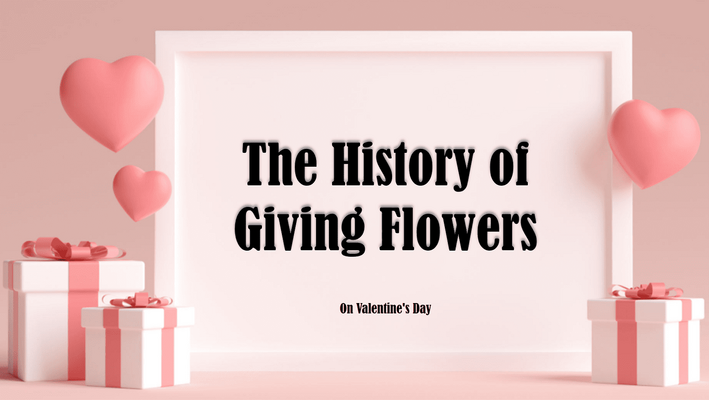
Valentine's Day, a day marked by the exchange of sweet words, chocolates, and most notably, flowers, has a rich history that intertwines with the tradition of expressing love and affection. The history of Valentine's Day itself is a fascinating tale, filled with legends of Saint Valentine and his secret marriage ceremonies. But the tradition of giving flowers, particularly roses, on this day of love is a story in itself.
The tradition of giving flowers on Valentine's Day dates back centuries, with roots in both ancient and more recent history. The custom was popularised in the 18th century by King Charles II of Sweden, who introduced the concept of floriography, or the language of flowers. This language allowed individuals to express emotions and messages that society often deemed inappropriate to voice aloud.
On Valentine's Day, flowers, especially roses, became the perfect medium to convey deep affection and love. The symbolism of flowers, and roses in particular, is deeply ingrained in our culture. The red rose, associated with Venus, the Goddess of Love, has become a staple of Valentine's Day traditions.
In this article, we'll delve into the history of giving flowers on Valentine's Day, exploring the origins of this tradition, the significance of roses, and how this practice has evolved over time. We'll also look at the role of roses in different cultures and eras, from the ancient Greeks and Romans to the Victorians and their elaborate floral bouquets.
So, whether you're a hopeless romantic, a history buff, or simply someone who loves the beauty and symbolism of flowers, join us on this journey through time, exploring the romantic symbolism of roses, the language of flowers, and the history of Valentine's Day.
The History of Valentine's Day
Dive into the romantic and storied past of Valentine's Day, a celebration that has evolved from ancient Roman rituals to the sweet, love-filled holiday we know today.
The origins of Valentine's Day are as intriguing as a love story. With roots in the ancient Roman festival of Lupercalia, a mid-February event that celebrated the coming of spring with fertility rites and the pairing off of women with men by lottery, the day has transformed significantly over the centuries.
The modern holiday is named after Saint Valentine, a figure shrouded in mystery due to the existence of several Christian martyrs bearing the same name. One legend tells of a priest who was martyred around 270 CE by Emperor Claudius II. Another speaks of Saint Valentine of Terni, a bishop who may have been the same person as the priest. The common thread in these stories is a heroic and romantic figure who defied the emperor's orders and performed secret marriage ceremonies.
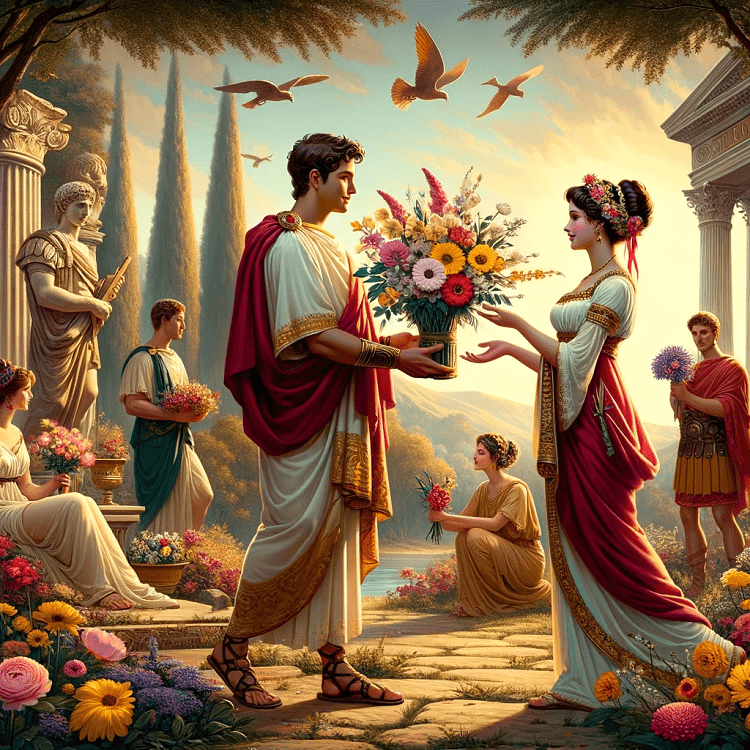
The feast of Saint Valentine was established by Pope Gelasius I in the 5th century to Christianise the pagan festival of Lupercalia. It was during this time that the day began to be associated with love, possibly due to the timing of the mating season of birds, which added to the notion of romance.
As the years passed, the holiday gained popularity across Europe. Writers like Chaucer and Shakespeare romanticised it in their works, which helped to solidify its association with love and affection. By the 18th century, the tradition of exchanging hand-made valentines had begun, and by the mid-1800s, the first commercial valentines appeared in the United States.
Today, Valentine's Day is celebrated worldwide, with various traditions that include the exchange of cards, chocolates, and, of course, flowers. The red rose, in particular, has become synonymous with beauty and love, a symbol that has withstood the test of time.
So, as we celebrate this day of love, let's remember the rich tapestry of history that has woven together to form Valentine's Day—from the ancient Roman festivities to the legends of a saint who championed love and marriage against all odds.
The Tradition of Giving Flowers on Valentine's Day
The tradition of giving flowers on this special day is steeped in history and romance. It's believed that the practice became popular in the 18th century, thanks to King Charles II of Sweden. During a visit to Persia, he was introduced to the art of floriography, the language of flowers, which became an intricate way of communicating emotions. This practice allowed people to express feelings that were often considered too bold or personal to be spoken aloud.
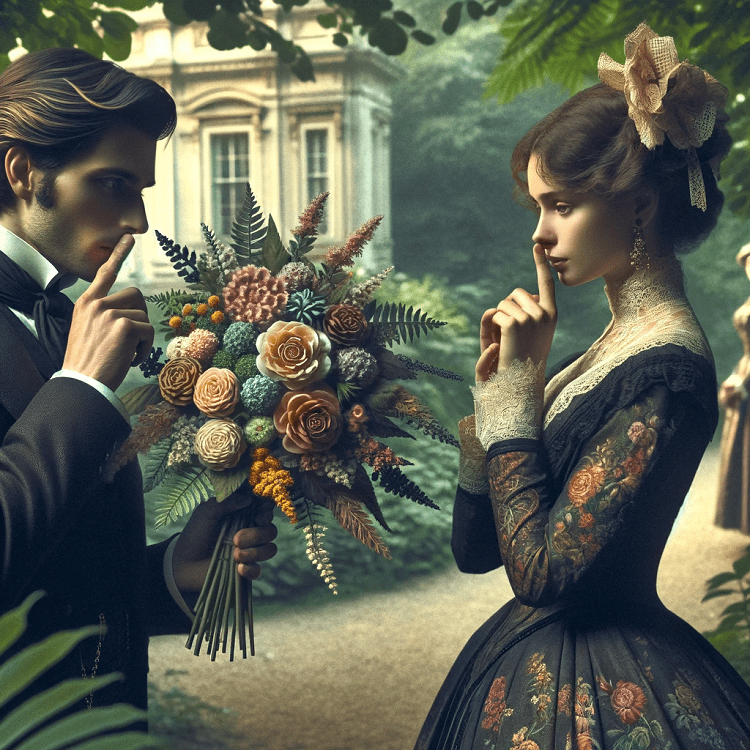
On Valentine's Day, flowers serve as messengers of love. Each bloom and color carries a unique meaning, with roses being the quintessential symbol of deep affection. The red rose, in particular, is associated with Venus, the Goddess of Love, and is the most traditional choice for conveying romantic love.
The Victorian era further refined the art of flower giving, with elaborate floral bouquets crafted to convey complex messages. Each flower and arrangement held a secret meaning, allowing lovers to send coded messages to one another. This Victorian flower tradition has influenced how we give flowers today, with a focus on the emotional symbolism of each petal and hue.
In modern times, the act of giving flowers on Valentine's Day has become a global phenomenon, with millions of bouquets exchanged every year. From the symbolism of flowers to the romantic symbolism of roses, this tradition continues to evolve, yet the message remains the same: a gesture of love, a token of admiration, and a timeless way to say "I love you."
As we celebrate this day of love, let's cherish the beauty and history behind the tradition of giving flowers on Valentine's Day. Whether it's a single red rose or a lavish bouquet, the language of flowers is a powerful way to express the feelings that words alone cannot capture.
The Significance of Roses
Unravel the captivating tale of roses, the quintessential Valentine's Day flower, and discover why these blooms have become the ultimate symbol of love and affection.
The significance of roses in the context of Valentine's Day is deeply rooted in history and symbolism. The rose, with its velvety petals and intoxicating scent, has long been associated with love, beauty, and passion. The red rose, in particular, is linked to Venus, the Goddess of Love, making it the perfect emblem of romantic love.
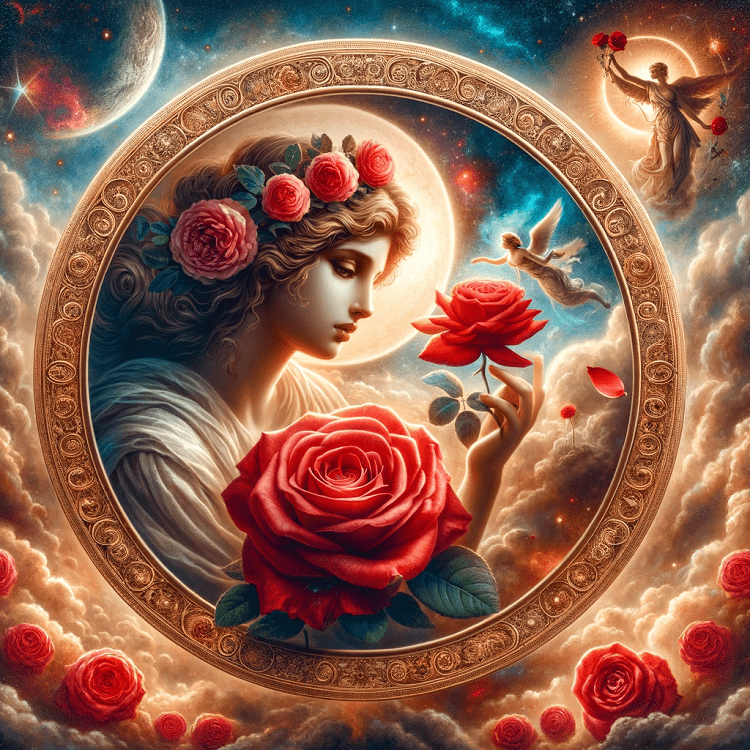
The history of rose cultivation is as fascinating as the flower itself. Roses have been cherished for thousands of years, with the earliest evidence of rose cultivation dating back to ancient civilizations in China, Persia, and the Mediterranean. These early roses were often used in religious ceremonies, as medicinal ingredients, and as a source of perfume.
The symbolism of roses became even more complex during the Victorian era, when the language of flowers, or floriography, was at its peak. Each color and variety of rose held a different meaning. Red roses symbolised deep love and respect, while pink roses conveyed admiration and gratitude. White roses represented innocence and purity, and yellow roses were a symbol of friendship and joy.
Today, the red rose remains the most popular choice for Valentine's Day flowers, symbolising deep love and desire. The tradition of giving a dozen red roses is thought to represent the twelve months of the year, signifying an enduring love that lasts all year round.
As we jump into the history of giving flowers on Valentine's Day, it's clear that roses hold a special place in our hearts. Their timeless beauty, rich history, and powerful symbolism make them the perfect way to express our deepest feelings of love and affection. So, this Valentine's Day, when you give or receive a rose, remember the centuries of tradition, symbolism, and romance that each bloom carries with it.
The Role of Roses in Different Cultures and Eras
Embark on a fascinating journey through time and cultures, exploring the enduring allure of roses and their significant role in history.
The role of roses in different cultures and eras is a testament to their timeless appeal and profound symbolism. From ancient civilisations to modern societies, roses have been revered for their beauty, fragrance, and symbolic meanings.
In ancient Greek and Roman cultures, roses were closely associated with the gods. The red rose, in particular, was linked to Aphrodite, or Venus as she was known in Roman mythology, the Goddess of Love. Roses were often used in religious ceremonies and to adorn statues of the gods. They were also used as confetti at celebrations, as a source of perfume, and even as a medicinal ingredient.
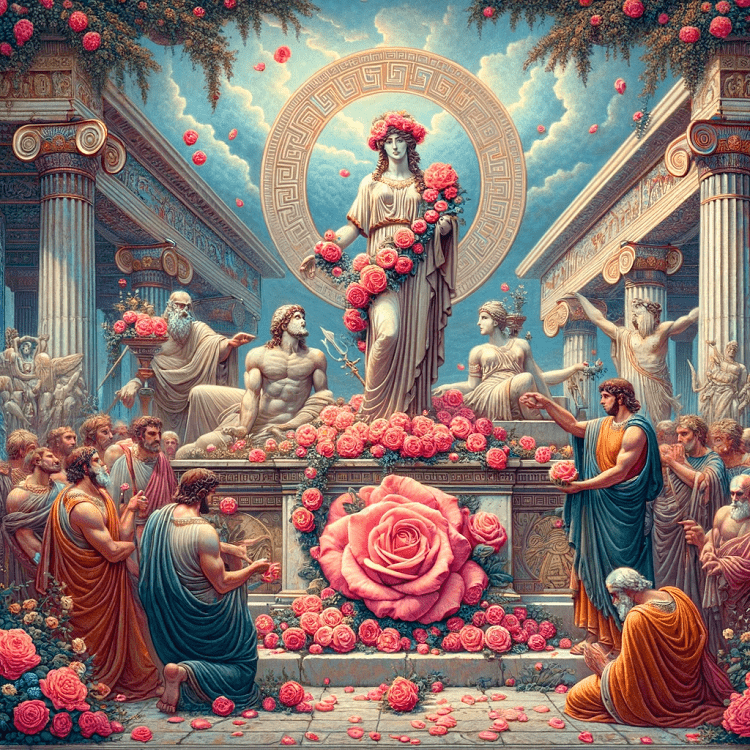
The Victorian era saw a heightened interest in the language of flowers, or floriography. Roses, with their myriad of colours and varieties, were central to this floral language. Each colour and type of rose held a different meaning, allowing individuals to express a range of emotions. Red roses symbolised love and respect, pink roses indicated admiration and gratitude, and yellow roses represented friendship and joy.
In the Middle East, roses have a rich history, particularly in areas like Iran, where they've been cultivated for over a thousand years. The rose gardens of Iran are legendary, and the country is known for its rose water and rose perfume.
In modern times, roses continue to play a significant role in various cultural practices and celebrations around the world. They are a popular choice for weddings, anniversaries, and of course, Valentine's Day. The red rose remains the ultimate symbol of love and affection, making it the perfect choice for Valentine's Day flowers.
As we explore the history of giving flowers on Valentine's Day, it's clear that roses, with their rich history and universal symbolism, have truly earned their title as the 'Queen of Flowers'. Whether given as a single stem or a lavish bouquet, roses continue to be a timeless expression of love.
Modern Valentine's Day Celebrations
Today, Valentine's Day is celebrated in many countries around the globe, each with its unique traditions and customs. However, the common thread that binds these diverse celebrations is the expression of love and affection, often symbolised by the exchange of flowers.
The commercialisation of Valentine's Day has seen it evolve into a significant event on the retail calendar. Every year, millions of roses are sold worldwide for Valentine's Day, making it one of the busiest times for florists. The red rose continues to reign supreme as the most popular choice, its vibrant hue and velvety petals encapsulating the essence of romantic love.
In addition to roses, other types of flowers, such as tulips and lilies, have also gained popularity as Valentine's Day flowers. The choice of flower often depends on personal preference, cultural practices, and the specific message the sender wishes to convey.

The tradition of giving flowers is complemented by the exchange of cards, chocolates, and other gifts, each adding a layer of sweetness to the celebration. In recent years, experiences such as romantic dinners, getaways, and spa treatments have also become popular Valentine's Day gifts, offering couples unique ways to celebrate their love.
Despite these modern additions, the tradition of giving flowers on Valentine's Day remains a central part of the celebration. The act of giving a bouquet, whether it's a single red rose or a lavish arrangement, continues to be a powerful way to express love and affection.
As we reflect on the history of giving flowers on Valentine's Day, it's heartening to see that the essence of the tradition, the expression of love through the beauty and symbolism of flowers, remains unchanged. In a world that's constantly evolving, the timeless appeal of flowers, particularly roses, continues to touch hearts and celebrate love in its purest form.
Further Reading
If you've enjoyed learning about the history and significance of giving flowers on Valentine's Day, you might also be interested in discovering how to make those beautiful blooms last longer. In another article on our blog, titled "4 Ways to Preserve Your Valentine’s Day Flowers", we explore various methods to preserve and cherish your Valentine's Day flowers for a longer time. From pressing to drying, each technique allows you to extend the life of your flowers, keeping the memories of that special day alive. So, after you've given or received your Valentine's Day bouquet, why not try preserving those blooms? You'll not only have a lasting memento of Valentine's Day, but also a beautiful piece of natural art to display in your home
Summing Up...
From the ancient Romans and Greeks to the Victorians and our modern society, the act of giving flowers, particularly roses, has remained a powerful way to express love and affection. The red rose, with its deep connection to Venus, the Goddess of Love, continues to be the ultimate symbol of romantic love.
The history of Valentine's Day and the tradition of giving flowers on this day remind us of the enduring nature of love and the timeless appeal of expressing our feelings through the beauty and symbolism of flowers. Whether it's a single red rose or a lavish bouquet, each flower carries a message of love, making Valentine's Day a truly special occasion.
As we celebrate Valentine's Day in our modern world, with its commercialisation and diverse traditions, let's remember the rich history that has shaped this day of love. Let's cherish the symbolism of flowers, the romantic symbolism of roses, and the language of flowers that allows us to express our deepest emotions.
So, this Valentine's Day, as you give or receive flowers, remember the centuries of tradition, symbolism, and romance that each bloom carries with it. And most importantly, let's celebrate love in all its forms, for it's love that truly makes the world go round.
